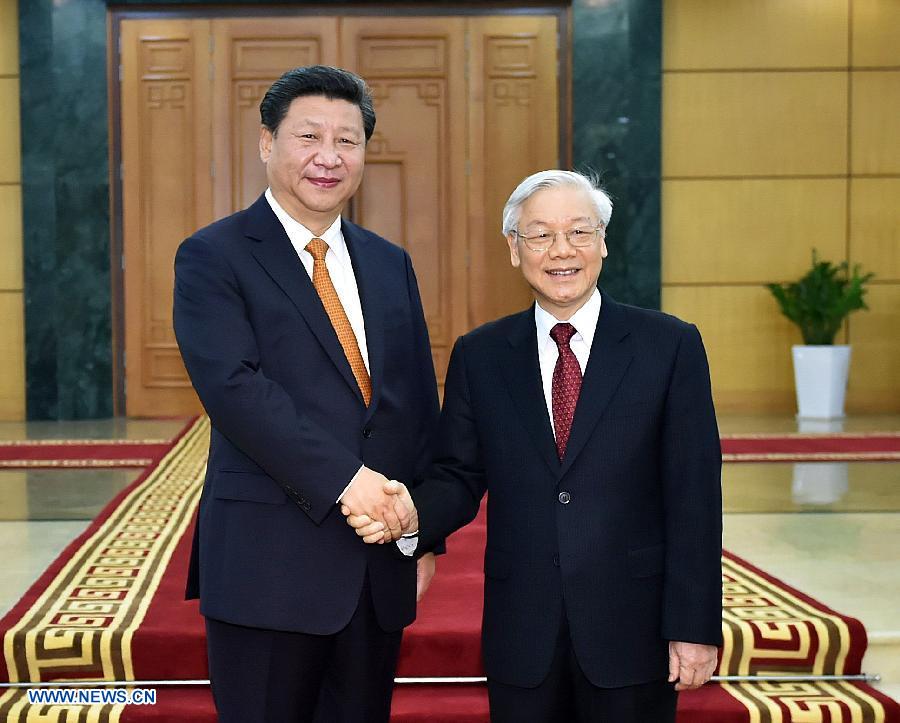
- Though economic cooperation was the focal point, Xi aimed to align Hanoi with China’s foreign policy vision, emphasizing a “global community of shared future.”
- Vietnam, despite its “four nos” defence policy, seeks reassurances from Beijing regarding military ambitions, particularly in the South China Sea.
- The visit underscores the challenges and opportunities for Vietnam as it balances its relationships with major powers amid regional security concerns.
Chinese leader Xi Jinping completed his two-day visit to Hanoi, focusing on enhancing ties with Communist counterparts. The visit aimed to strengthen economic cooperation, particularly by investing in crucial railway lines that are vital for Vietnam’s exports, providing a boost to its post-pandemic growth.
Xi’s visit occurred against the backdrop of the evolving geopolitical landscape, marked by the Biden administration’s efforts to limit China’s influence in the Indo-Pacific. Vietnam, like other nations, faces the challenge of navigating a delicate balance between the world’s largest economies while addressing territorial concerns, especially in the South China Sea.
Since Xi’s last visit to Vietnam in 2017, significant changes have occurred. Vietnam has emerged as a beneficiary of U.S.-China trade tensions, attracting billions of dollars in redirected investments from China. Adopting a more inclusive approach, Vietnam has strengthened ties with the U.S. and its allies, exemplified by the formal upgrade of its relationship with the U.S. to a “comprehensive strategic partnership” during President Biden’s September visit.
Japan and Vietnam also elevated their ties, emphasizing adherence to international law and territorial integrity, which hasn’t gone unnoticed by China. These diplomatic manoeuvres by Vietnam underscore its commitment to maintaining independence while seeking stability and development.
Xi’s visit provided an opportunity to nurture the relationship with Vietnam. Talks included economic incentives, with China expressing readiness to fund the upgrade of Vietnam’s railway infrastructure. The visit also sought to establish a “new level” of bilateral relations, as noted by Vietnam’s Permanent Deputy Foreign Minister Nguyen Minh Vu.
While economic cooperation was a focal point, Xi also aimed to align Hanoi with China’s foreign policy vision, emphasizing a “global community of shared future.” This vision, starting in Asia, was highlighted in a letter published by Vietnam’s communist party newspaper ahead of Xi’s visit.
Despite economic incentives, thorny issues such as defence and maritime concerns in the South China Sea were on the agenda. Vietnam and China have a complex military history, including a brief border war in 1979. Tensions persist over control of island chains, with China maintaining a significant naval presence, and Vietnam urging respect for its sovereignty.
Vietnam, despite its “four nos” defence policy, seeks reassurances from Beijing regarding military ambitions, particularly in the South China Sea. The visit underscores the challenges and opportunities for Vietnam as it navigates a complex geopolitical landscape, balancing relationships with major powers and addressing regional security concerns.
In summary, Xi’s recent visit to Hanoi reflects the evolving dynamics in the region, with economic cooperation, geopolitical balancing, and addressing security concerns playing pivotal roles in shaping the relationship between China and Vietnam.
(The author is a post-graduate student in International Relations at Kalinga University, Raipur. Views and opinions expressed are the author’s own)
Aayush Pal is a freelance writer on contemporary geopolitical developments. The views expressed in his work are entirely his own.
